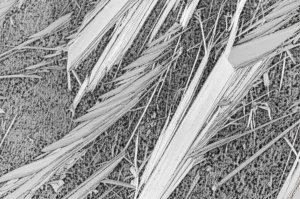Cracking the MASH Code: How AI is Finding New Clues for Liver Disease Diagnosis!
Hey folks! Ever heard of MASH? And no, I’m not talking about the iconic TV show, though this MASH is also a pretty serious drama unfolding in our bodies. I’m talking about Metabolic Associated Steatohepatitis. It’s a bit of a mouthful, I know, but it’s essentially a more severe form of fatty liver disease, or MASLD (Metabolic Associated Fatty Liver Disease), as it’s now called. We’ve moved on from the old terms like NAFLD and NASH, and for a good reason – this new name really puts the spotlight on metabolic factors being the main culprits.
Why should we care? Well, MASH isn’t just a bit of extra fat in the liver. It’s a troublemaker that can lead to some nasty stuff like cirrhosis (that’s serious liver scarring) and even liver cancer. And guess what? It’s on the rise, hand-in-hand with the global spread of metabolic syndrome. So, finding better ways to spot it and treat it is a big deal.
Right now, if doctors suspect MASH, the gold standard for diagnosis is a liver biopsy. Yep, that means sticking a needle into your liver to grab a tiny piece. Ouch! Not only is it invasive, but it also comes with risks and isn’t something you can do routinely to screen everyone. This is where things get tricky for doctors and patients alike. We desperately need a less ‘ouchy’ and more accessible way to diagnose MASH.
The Sleuths of Science: Bioinformatics and Machine Learning to the Rescue
So, how do we move beyond the needle? That’s where some super smart science comes in, blending bioinformatics (think high-tech data crunching for biology) and machine learning (teaching computers to find patterns). I’ve been digging into a fascinating study that aimed to do just that: find metabolism-related gene (MRG) markers that could help us diagnose MASH without the biopsy blues.
The researchers were like digital detectives. They started by grabbing a whole bunch of datasets from the GEO database – that’s a public library for gene expression data. They specifically looked for datasets with MASH samples. The first step was a bit like cleaning up a messy room: they normalized the data to make sure everything was comparable and removed ‘batch effects’ – those annoying little differences that can pop up when data comes from different experiments or labs. They ended up with a ‘training cohort’ to teach their models and ‘validation cohorts’ to test if what they found actually worked on fresh data.
Then, they focused on 1731 MRGs from 84 metabolic pathways. The big question was: which of these genes are acting differently in people with MASH compared to healthy folks? They used some cool R packages (that’s a programming language popular with statisticians and data miners) to find these ‘differentially expressed genes’ or DEGs. They didn’t just look at one dataset; they used a clever method called RRA (RobustRankAggreg) analysis to find genes that were consistently up or down across multiple datasets. Talk about being thorough!

Narrowing Down the Suspects: Finding the Key Metabolic Genes
By cross-referencing the DEGs from their training set, the RRA analysis, and the known MRGs, they zeroed in on 34 metabolism-related differentially expressed genes (MRDEGs). That’s a much more manageable number to start with!
But what do these 34 genes actually do? To figure that out, they did something called enrichment analysis. This is like asking, ‘Okay, these 34 genes are interesting, but what biological clubs or pathways do they hang out in?’ The results were pretty telling. These MRDEGs were heavily involved in things like:
- ‘sterol biosynthetic process’ (think cholesterol making)
- ‘cholesterol metabolic process’ (how the body handles cholesterol)
- ‘endoplasmic reticulum lumen’ (a part of the cell involved in making proteins and lipids)
- ‘response to carbohydrate’
- ‘glycerolipid metabolism’ (fats and oils)
- ‘PPAR signaling pathway’ (important for fat storage and glucose metabolism)
- ‘glycolysis / gluconeogenesis’ (how we process sugar)
Basically, all roads led back to how our bodies handle fats and sugars – which makes total sense for a disease like MASH, right? It really underscores that metabolic mess-ups are at the heart of it.
To see how these 34 MRDEGs might be working together, they built a Protein-Protein Interaction (PPI) network. Imagine a social network, but for genes and proteins. This showed that 24 of these 34 genes were interacting with each other, forming little clusters of activity. This is super helpful because it starts to paint a picture of the molecular machinery involved.
Unleashing the AI: Machine Learning Picks the Star Players
Now, 34 genes are better than thousands, but can we get even more specific? This is where the magic of machine learning really shines. The researchers threw three different algorithms at the problem to pick out the absolute star players from these MRDEGs:
- LASSO regression: This one is great for shrinking down the number of variables while keeping the important ones. It flagged 15 MRDEGs.
- Support Vector Machine-Recursive Feature Elimination (SVM-RFE): This sounds complicated, but it’s a smart way to iteratively kick out the least important features until you have a strong set. It picked 25 MRDEGs.
- Random Forest (RF): This algorithm builds a whole bunch of ‘decision trees’ and then takes a vote to decide what’s important. It identified 18 MRDEGs.
By looking at where these three methods overlapped with the core genes from their PPI network, they hit the jackpot! They identified seven signature MRDEGs that seemed to be crucial in MASH. Drumroll, please… these superstar genes are: CYP7A1, GCK, AKR1B10, HPRT1, GPD1, FADS2, and ENO3.
So, how good are these seven genes at actually spotting MASH? The team built a diagnostic model using these genes. And get this – in their training group, the model was incredibly good, with an Area Under the ROC Curve (AUC) of 0.915! For those not in the know, an AUC of 1 is perfect, and anything over 0.9 is considered excellent. Even individually, most of these genes had AUCs over 0.7, which is pretty darn good. They even made a nomogram – a cool visual tool to predict MASH risk based on these genes.
But the real test is whether this holds up in new, unseen data. And it did! They tested the model on two independent external validation cohorts, and it performed exceptionally well again, with AUCs of 0.979 and 0.966! This is huge because it means these seven genes could genuinely form the basis of a reliable, non-invasive test for MASH.

Decoding the Genes and Peeking at the Immune System
It’s not just about diagnosis, though. Understanding why these specific genes are important gives us clues about what’s going wrong in MASH. For instance, GPD1 showed positive correlations with FADS2, GCK, and ENO3, while HPRT1 went the other way, suggesting they work in coordinated (or opposing) ways. Enrichment analysis of just these seven genes again pointed to pathways like galactose metabolism, glycolysis/gluconeogenesis, and the PPAR signaling pathway. It’s all about that glucose and lipid metabolism going haywire.
For example:
- AKR1B10 is involved in making fatty acids and lipids. More of it seems to promote MASH.
- FADS2 plays a role in polyunsaturated fatty acid (PUFA) balance. An imbalance here can ramp up inflammation.
- CYP7A1 is key in bile acid synthesis from cholesterol. Its dysregulation can lead to cholesterol buildup.
- ENO3, usually in glycolysis, might also be moonlighting in cholesterol ester synthesis, adding to liver lipid.
- GCK (glucokinase) is a liver enzyme for glucose processing; issues here can link to insulin resistance.
- HPRT1 is in purine metabolism. Lower levels might mean more uric acid, oxidative stress, and inflammation.
- GPD1 is crucial for carbohydrate and lipid metabolism. More GPD1 could mean more triglycerides in the liver.
It’s like these genes are little dials and switches in our metabolic control room, and in MASH, they’re not set right, leading to fat accumulation, inflammation, and all the downstream problems.
But wait, there’s more! MASH isn’t just a metabolic problem; the immune system gets heavily involved too. The researchers used a technique called ssGSEA to look at the levels of 28 different types of immune cells in MASH patients versus controls. And boy, did they find some differences!
They saw a significant increase in:
- Activated CD8 T cells
- Gamma-delta T (γδT) cells
- Natural Killer (NK) cells
- CD56bright NK cells
These are generally cells that can ramp up inflammation and cell damage. On the flip side, there was a decrease in:
- Eosinophils
- Type 2 T helper (Th2) cells
- Memory B cells
- Central memory CD8 T cells
- Effector memory CD8 T cells
Some of these, like memory CD8 T cells, can be protective or help resolve inflammation, so having fewer of them isn’t great news. Interestingly, some of the signature genes correlated with these immune cell changes. For example, GPD1 was positively linked with activated CD8 T cells and γδT cells, while HPRT1 was positively linked with the more protective eosinophils and Th2 cells. This suggests a direct link between the metabolic mess-up and the immune response.

The Big Picture: Hope for a Less Invasive Future
So, what’s the big takeaway from all this? Well, this study is pretty exciting because it’s given us a panel of seven metabolic gene biomarkers (CYP7A1, GCK, AKR1B10, HPRT1, GPD1, FADS2, and ENO3) that are really good at telling MASH patients apart from healthy individuals. This could be a game-changer for developing a non-invasive diagnostic test – something that could be done with a simple blood test, perhaps, instead of a liver biopsy. Imagine how much easier that would make it to catch MASH early!
Plus, by digging into what these genes do and how they connect to the immune system’s behavior in MASH, we’re getting a much clearer picture of the disease itself. It’s not just about fat in the liver; it’s a complex interplay of messed-up metabolism and an overzealous or misdirected immune response. Understanding these mechanisms is key to developing new treatments too.
Of course, no study is perfect, and the researchers are upfront about limitations. The data came from public databases, and samples were from different countries, which could introduce some variability. So, the next steps are crucial:
- Validate these findings in new, large groups of patients from different international centers.
- See if things like gender or region make a difference.
- Use techniques like flow cytometry on actual tissue samples to confirm the immune cell changes.
But even with these caveats, this is a fantastic step forward. It’s a brilliant example of how we can use powerful tools like bioinformatics and machine learning to unravel complex diseases like MASH. By identifying these signature genes and understanding their link to immune changes, we’re not just getting closer to better diagnosis; we’re also paving the way for more targeted therapies. It’s a hopeful outlook for tackling a disease that’s becoming all too common.
It really highlights how the shift in naming from NASH to MASH was spot on – metabolism is front and center, and these genes are shouting it from the rooftops (or, well, from the data!). Pretty cool, huh?
Source: Springer







